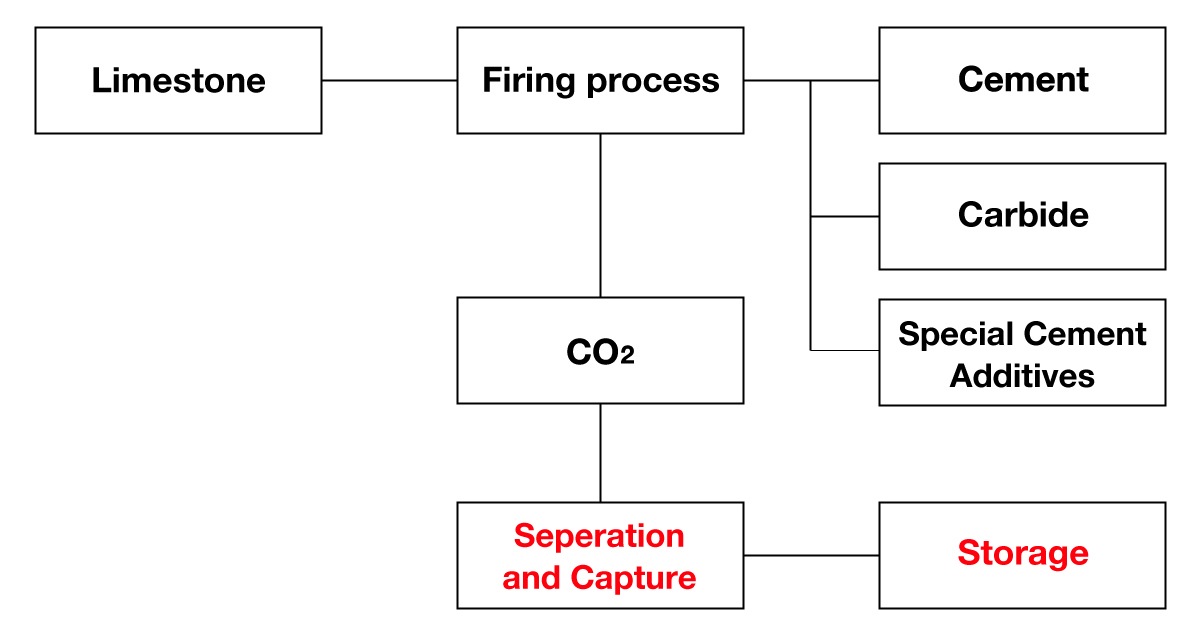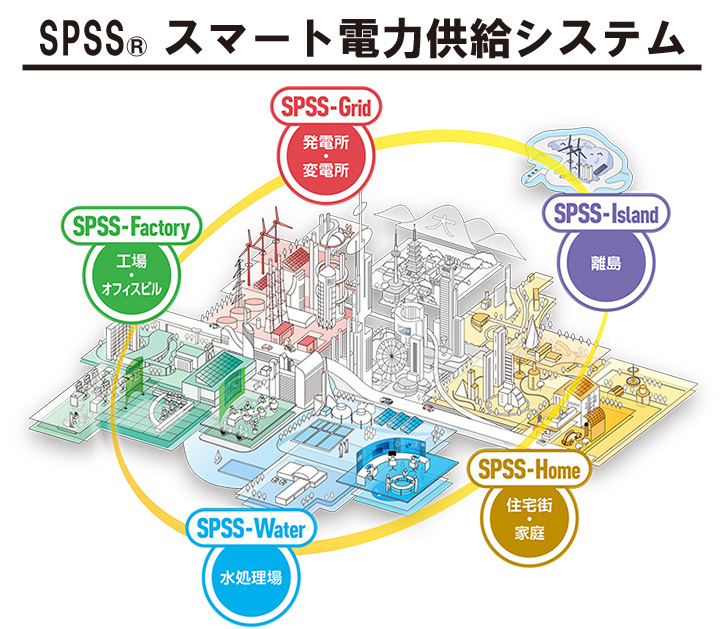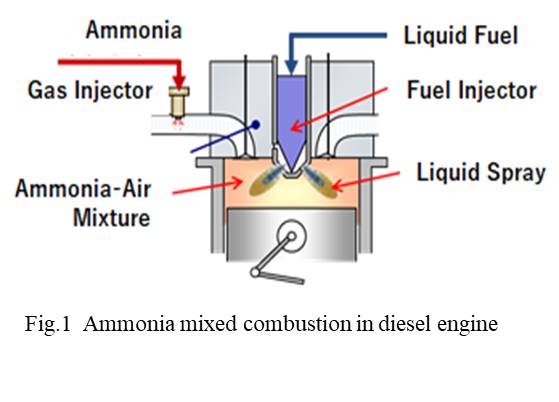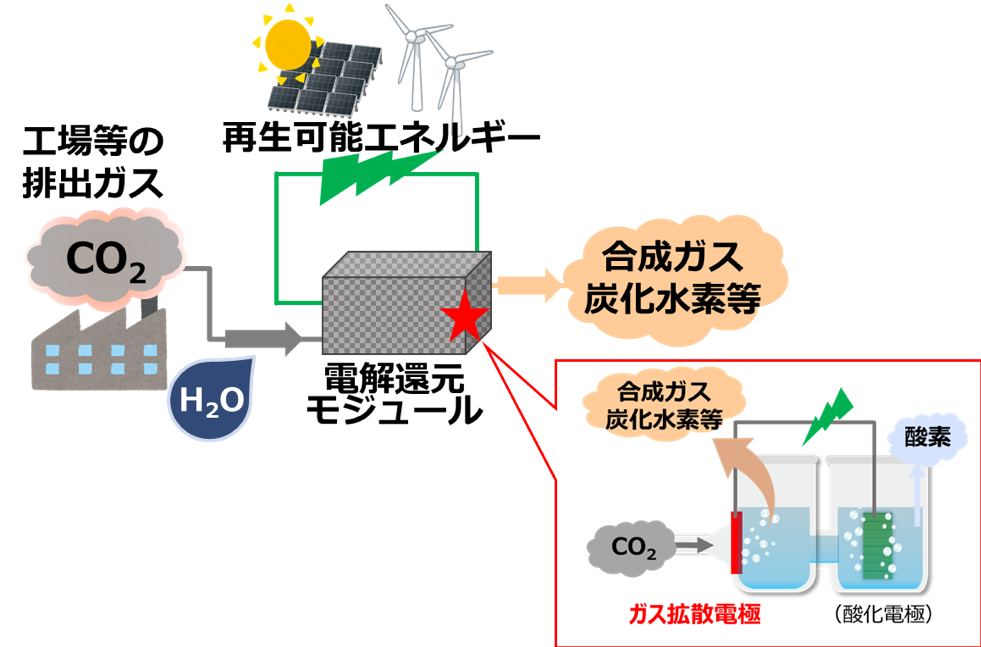Carbon dioxide Capture and Storage discharged from limestone firing furnace
Denka Company Limited
Outline
1. Background
We manufacture various products using limestone as a starting material and emit CO2 in the process. Aiming to reduce greenhouse gas (CO2) emissions and use it as a new raw material for our products, we have set measures that are challenging from a medium- to long-term perspective and have begun to respond.
2. Challenge
By separating and capturing CO2 from the exhaust gas, and storage and effectively utilizing it, the number of emissions into the atmosphere will be reduced.
Currently, we are studying chemical absorption, physical absorption, and membrane separation methods as CO2 separation and capture technologies, and aim to introduce optimal processes.
Separated and captured CO2 will be immobilized and effectively utilized by absorbing it into the concrete products.
3. The plan
Develop technologies from separation and capture to immobilization and implement them to achieve medium- to long-term goals.
Description
1. The project
We have the following challenging goals:
・ Medium-term target: Reduce greenhouse gas emissions in FY2030 by 26% compared to FY2013.
・ Long-term target: Real greenhouse gas emissions by FY2050 compared to FY2013 by 85% reduction.
This proposal is positioned as a technology development project that is indispensable to achieve the above medium- to long-term goals.
2. The process
The mined limestone generates CO2 during the firing stage. The measures to reduce CO2 this time are as follows.
1) Separating and Capturing CO2 from the exhaust gas generated from the limestone firing furnace.
2) Absorbing and storing the separated CO2 to concrete products.
3. Issues and response policies
Key issues include:
1) CO2 separating and capturing
① CO2 separation and capture technology: The currently developed separation and capture technologies include chemical absorption, physical adsorption, and membrane separation technology. Based on these, we will proceed with the development of separation and capture technology that is compatible with our processes. In addition, impurities contained in the exhaust gas are expected to be a major obstacle to continuous stable operation. And an exhaust gas purification process will be established to expand the applicability of using the captured CO2.
② Technology that can follow load fluctuations in the firing furnace: The amount of CO2 generated varies greatly depending on the operating conditions of the firing furnace. In order to capture CO2 stably and with high efficiency, the ability to follow the load of actual operation is a major issue.
2) CO2 Storing
③ Absorption and storage of CO2: In order to stably produce concrete products that absorb and fix the recovered CO2, promote materials (special additive cement) and new equipment design. The issues are the efficiency of CO2 absorption, productivity, and product stability.
Similar Innovation Challenges
Achieving net zero carbon emissions from paint finishing processes
Taikisha Ltd.
Activities for reducing GHG of business operations in Nissin Electric Group
Nissin Electric Co., Ltd.








-1人工光合成技術.jpg?id=2&tid=759&imageNumber=1)